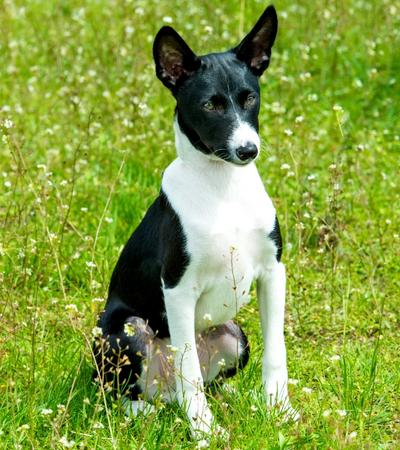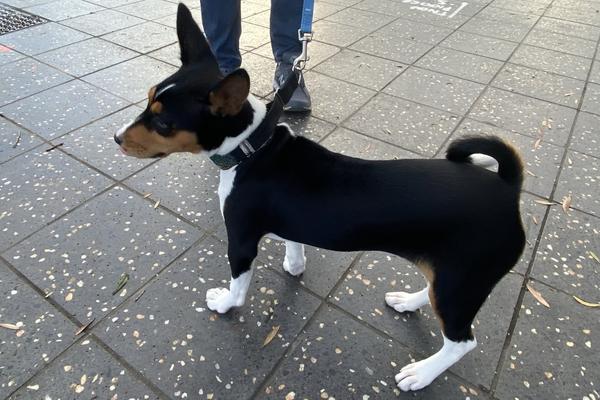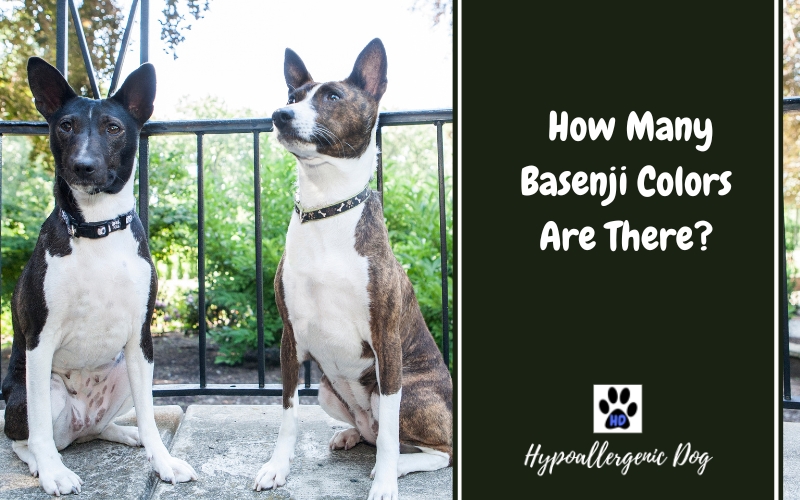Basenji Colors
The Basenji, or African Hunting Dog, is a hound with a history that dates back to 4,000 BCE. These independent canines can be found in various traditional colors — tri-color, black and white, or red. But there are some extraordinarily rare Basenji colors too. Let’s find out more.
How Many Basenji Colors Are There? Contents
The Basenji
Is The Basenji Coat Hypoallergenic?
Standard Basenji Coat Colors
Are Certain Basenji Colors More Expensive?
Conclusion
Basenji Colors FAQs
The Basenji is a small to medium breed that’s thought to be one of the originals — a breed many of today’s beloved bow-wows descend from.
Not only does this sharp canine have a variety of colors, but they also don’t bark. Basenjis make a variety of vocalizations to communicate, much like wild dogs, which has often been referred to as a yodel.
Unique with large pointy ears, their independent but friendly nature is a huge appeal to families. These dogs are a good match for those wanting a breed that can keep up with outdoor activities and stand out at the dog park.
Is The Basenji Coat Hypoallergenic?
The Basenji coat is short and fine and designed to keep them cool in the heat and humidity that would be found in their native countries.
This short coat is also what contributes to their hypoallergenic status. Alongside minimal shedding and low dander, they produce minimal odor. Plus, these dogs groom themselves in a similar way to cats, so are super clean.
Standard Basenji Coat Colors
From a quick look into the breed, you’ll notice a massive variation in the Basenji colors. But, the four most common include — tricolor, red, black, and brindle.
And, while the base colors define what they’re classed as, according to the breed standard, the Basenji should be white on the face, legs, neck, and collar. And, they should never be all-white, or appear with more white than the primary color/s.
Red Basenji

The color most people associate with this breed.
Their coat may have a variety of shades within it, but the red and white Basenji will be mainly covered in a rich and deep chestnut color with a mix of tan, orange, or beige shades — similar to the colors seen on the Pomeranian.
Red will be the predominant color, and you won’t see any colors blending either. You can also expect some patches of pure white around the collar, legs, and chest.
If you want a true Basenji in red, you would need to ensure that both parents are not only true red themselves, but also don’t have any other color genes.
Black and White Basenji

Typically you will see a black and white Basenji with areas of pure white on the chest, head, and legs. They will have a deep and glossy pure black body, with clearly defined edges between the lighter areas.
Most Basenjis with this type of colored coat also carry a recessive color gene — meaning they’re heterozygous. Due to the dominance of black it doesn’t come through on their markings. And, because of this genetic trait, when breeding, you may find it leads to a wide range of color possibilities.
Brindle Basenji

The Basenji brindle color can be described as carrying the typical white markings along with black stripes on top of a chestnut red/brown background. The arrangement of their stripes are varied, and they’re usually so heavily marked that you won’t be able to see much of the red underneath.
To get this coat color, you either need a pair of brindle Basenjis, or you could introduce a brindle to a tricolor.
Tricolor Basenji

The tri color Basenji, is a mix of three colors — generally black, red, and white. This can vary in strength and prominence, but a white or gray undercoat might be noticeable around the neck. As long as the colors and markings are clear and defined, you’ll have a tricolor on your hands!
There is some confusion between this variety and the black and tan Basenji, which isn’t a recognized color for the breed. But, they’re one and the same — thanks to the white present on all Basenjis, black and tan is simply another name used for the tri.
Rare Basenji Colors
Although the above Basenji colors are what we commonly see on purebreds, the alternative or rare varieties — are unusual and highly interesting. These extraordinary colorings are becoming more popular in the US as they slowly get imported from their homes in Africa. And, while the American Kennel Club breed standards acknowledge these, the Basenji Club of America only lists the standard colors.
Basenji Blue
Blues have a more diluted black color — think gray or silver — to their coat but possess the usual white marks on their face, chest, and legs. This color is a result of variants in tri-colored Basenjis. However, in comparison to the cream or red tones, the blue Basenji colors show through more.
All-Black Basenji
You’re more likely to see a Basenji in tricolor, but it is possible to find an all-black, albeit extremely rare.
There shouldn’t be any tan or blue coloring — just a pure black glossy coat and gray undercoat, with the standard white markings. But make sure you do your research, as the genetics are unknown of this variation.
Blue, Cream, and White
Basenjis with this color pattern will have a blue hue — more like silver or gray — and cream highlights replace the usual white Basenji areas. This variety is a result of tri-colored dogs who carry the cream gene and therefore created this unique mix.
Mahogany and White
Much darker than your typical red basenji, the mahogany is much deeper in color due to the mixture of black hair within.
This color pattern is one of the rarest Basenji colors you can find, and the evidence to prove them is just as scarce. There are very few color images of this variety in existence.
Sable and White
A highly unusual coloring, the sable and white Basenji resembles, and is often mistaken for the sesame Shiba Inu. You may find the hairs on a sable and white are tipped with black, but they will largely have the usual red and white pattern across their body.
Trindle Basenji
The trindle Basenji is often mistaken for a tri color. And, as the trindle isn’t recognized by the AKC, they’re often registered as brindle Basenjis — confusing, right?
But there is a way to tell them apart, a trindle basenji will have black stripes or brindle markings across all of its tan fur, which isn’t seen on the tri color dogs.
Are Certain Basenji Colors More Expensive?
Unlike many breeds, Basenji dog colors aren’t so much of an issue for show purposes. In that, organizations like the AKC, accept the fact that this canine comes in multiple coat variations. Instead, temperament, health, and other criteria on the breed’s standards are considered the priority points.
However, some — but not all — breeders may take advantage of the Basenji’s colorings and sell them at a higher price. In theory, the coat color shouldn’t make a difference, it doesn’t cost the breeder anymore to raise either a black or a brindle. That said, demand for a rare color could push up the price tag.
What’s more, Basenjis are unique in other ways. They only come into season once a year, unlike other breeds. This means that puppies are in shorter supply than other dogs.
Conclusion
This one-of-a-kind breed can be found in a range of mixtures, markings, and combinations. From the standard colors of red or black, brindle or tri through to the scarce shades of mahogany or blue.
But remember, it’s not all about the Basenji colors — their personality isn’t defined by what they look like. Temperament, activity levels and trainability are perhaps more crucial points to think about before deciding whether the Basenji is a good fit for your family.
Basenji Colors FAQs
Is a Basenji Rare?
Compared to the Golden Retriever, the German Shepherd, or Poodle, the Basenji isn’t as common in the US, but interest in this breed is increasing. They’re currently ranked 85th in AKC’s popularity list.
Are Brindle Basenjis Rare?
The Brindle Basenji is one of the four standard colors — including tricolor, red, and black. Yet, it’s the least prevalent.
Can Basenjis Be Aggressive?
The Basenji isn’t considered to be an aggressive dog breed when they’re trained and raised properly. They can seek to dominate other male dogs, but this doesn’t usually result in an aggressive display of behavior.
Are Basenjis Cuddlers?
Basenji are extremely passionate and loyal to their owners once a strong bond has been established, but they aren’t overly clingy and are happy to be left alone. They’re incredibly clean animals too, who regularly groom themselves, making them ideal to cuddle up with.
What Are Common Basenji Colors?
The most common Basenji color is red, but it can also be described as tan, or even orange.


